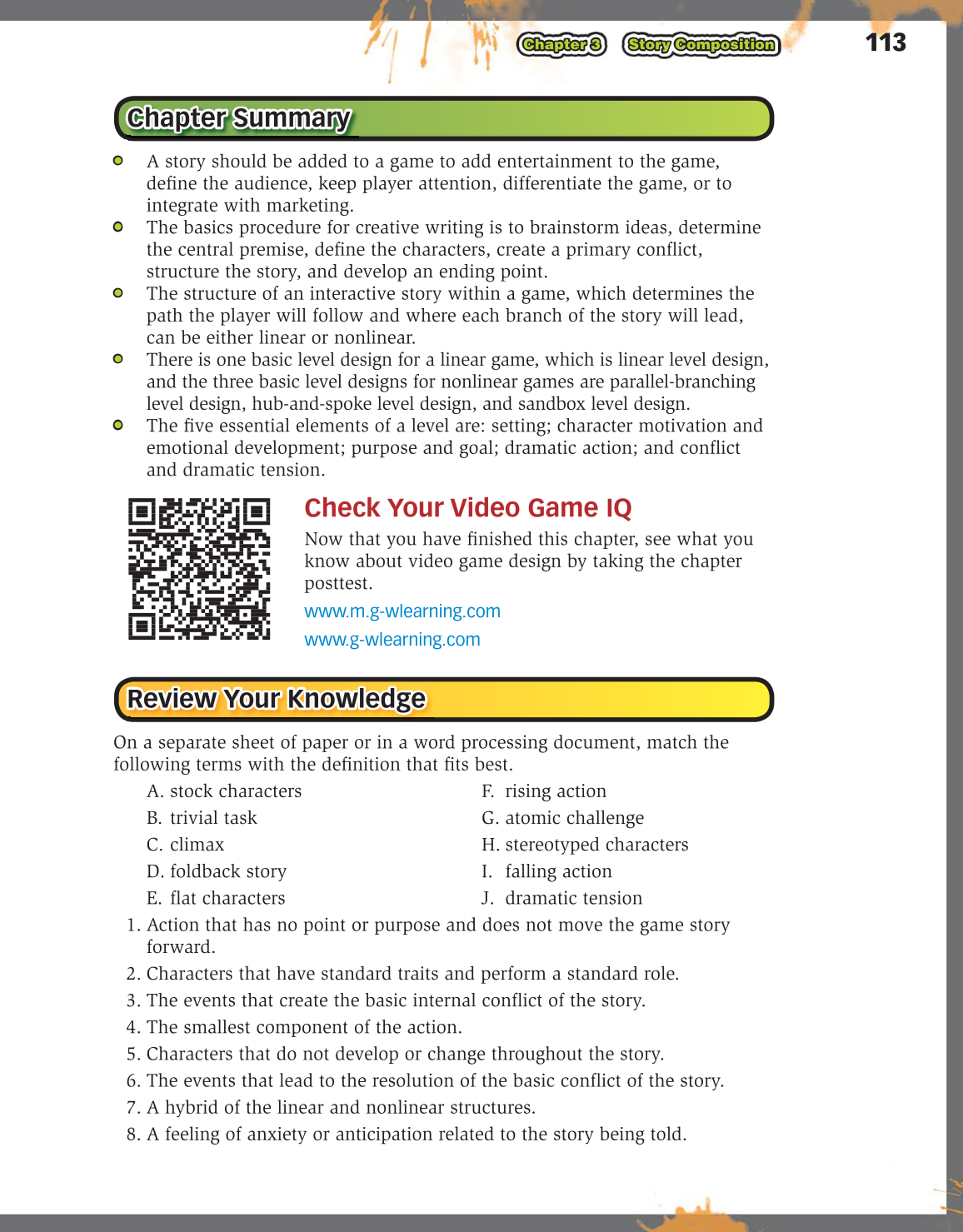113
Chapter 3 Story Composition
• A story should be added to a game to add entertainment to the game,
define the audience, keep player attention, differentiate the game, or to
integrate with marketing.
• The basics procedure for creative writing is to brainstorm ideas, determine
the central premise, define the characters, create a primary conflict,
structure the story, and develop an ending point.
• The structure of an interactive story within a game, which determines the
path the player will follow and where each branch of the story will lead,
can be either linear or nonlinear.
• There is one basic level design for a linear game, which is linear level design,
and the three basic level designs for nonlinear games are parallel-branching
level design, hub-and-spoke level design, and sandbox level design.
• The five essential elements of a level are: setting; character motivation and
emotional development; purpose and goal; dramatic action; and conflict
and dramatic tension.
Check Your Video Game IQ
Now that you have finished this chapter, see what you
know about video game design by taking the chapter
posttest.
www.m.g-wlearning.com
www.g-wlearning.com
On a separate sheet of paper or in a word processing document, match the
following terms with the definition that fits best.
A. stock characters
B. trivial task
C. climax
D. foldback story
E. flat characters
F. rising action
G. atomic challenge
H. stereotyped characters
I. falling action
J. dramatic tension
1. Action that has no point or purpose and does not move the game story
forward.
2. Characters that have standard traits and perform a standard role.
3. The events that create the basic internal conflict of the story.
4. The smallest component of the action.
5. Characters that do not develop or change throughout the story.
6. The events that lead to the resolution of the basic conflict of the story.
7. A hybrid of the linear and nonlinear structures.
8. A feeling of anxiety or anticipation related to the story being told.
Chapter Summary
Review Your Knowledge
